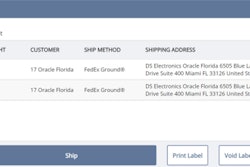
There’s been a lot written about persistent supply chain disruptions over the last several years. Starting with waves of demand surges as COVID-19 set in, and followed by inventory shortages with price increases, what is happening? When is it going to end? What should you be doing to weather these retail overstock issues?
The Alloy data platform examined 40 million SKU-location combinations over the past couple of years, finding the following trends in consumer brand insights:
- Demand is steady: The dramatic growth in demand has leveled off, but there aren't any broad reductions in purchases, even with the increased prices.
- Inventories have been trending up since the new year: Inventories built up prior to the holiday season as normal, but then they didn't come back down post-holidays and have continued slowly building since then.
- Out-of-stock rates are down: Remember all of those empty store shelves consumers have been complaining about since the start of the pandemic? They are largely a thing of the past. Out-of-stocks, which have been very high during the pandemic, have returned to historical averages. We appear to be leaving a pretty unusual time without much recent historical precedent— one in which demand was high and inventory was struggling to keep up.
Demand is shifting back toward historical norms.
There have been some unsettling stories written in the press about demand completely collapsing as inflation-weary consumers stop spending. While demand growth has slowed dramatically from the high rates during the pandemic, there is much more of a moderation versus a decline. The shift appears, in part, to be due to consumers having shifted their spending away from goods and toward services, which were not available during the pandemic.
Recent earnings calls from retailers and brands echo this reasoning. In Target’s May earnings, the retailer said they "expect consumers to continue refocusing their spending away from goods and services. We didn't anticipate the magnitude of that shift. … This led us to carry too much inventory, particularly in bulky categories, including kitchen appliances, TVs and outdoor furniture." Looking at ecommerce adoption, we can see that demand shifted sharply higher during the pandemic and now seems to be returning to the pre-pandemic trend. What we're feeling now is the hangover from the huge surge of e-commerce demand felt at the height of the pandemic.
So, what happens next and when does this end?
Retailers have started markdowns to draw down these higher inventory levels and it’s already having an impact. In Walmart’s recent earnings, from August 16th 2022, the CFO gave a bullish estimate that “the problem is going to persist through the third quarter, and probably even bleed in the fourth quarter a little bit. But our hope is that as we come out of the end of the year, we are in a much better position.” In their earnings from August 17th 2022, Target reports their profits are down sharply, but they are seeing demand hold up and expect margins to bounce back in the second half of the year. And this short-term pain for retailers is likely to further push down inflation.
The upcoming holiday season gives retailers the perfect opportunity to mark down products, and they’ll almost certainly take advantage of that. It’s likely that aggressive promotions in the fall will pull us out of this overstock situation after the new year. Five steps you can take now to make this period less painful:
- Realize that demand has not collapsed and act accordingly. What we’re dealing with here is a build-up of inventory based on a growth curve that was never going to last. This means short-term pain for retailers and consumer brands.
- Use data to push back against retailers ordering too much inventory. Replenishment needs to be a team sport. Get alerted when your retail partners are ordering POs they don’t need. Keeping an eye on consumer demand and channel inventory is essential to check against unnecessary orders. And, make sure your retailers aren’t also overcorrecting and leaving them too lean.
- Begin to ease off production. You want to ensure your supply matches demand as closely as possible. In some industries, it might even be better to have too little inventory than too much. The sooner you adjust your plans to make this correction, the more money you will save in the long run.
- Don’t be caught off guard by this sort of shift. Brands keeping a close eye on their POS and channel inventory data are able to see their “weeks of supply” climbing dramatically. That doesn’t mean they still aren’t feeling some pain, but they haven’t been caught completely off guard. Instead, they have been able to take the steps to mitigate unnecessary fallout from this shift in demand.
- It might be time to start running leaner. Companies have been operating in a high-inflation environment with costs of logistics, raw materials and labor going up. Until now, they’ve been able to push most of those costs along to consumers via price increases. With consumer spending beginning to cool, brands don’t have that outlet anymore. It’s time to begin looking at how to reduce costs such as reducing materials costs by putting pressure on your vendors, examining your labor and shipping costs.
In times of volatility, don’t operate in the dark. We’re in an era of constant and extreme volatility across supply and demand. Leaders across every industry need to take a data-driven approach to sales, replenishment, planning and supply chain. Connecting all of these different elements together for better insights will help consumer brands guard against volatility today, while they prepare for whatever comes next.












![Pros To Know 2026 [color]](https://img.sdcexec.com/mindful/acbm/workspaces/default/uploads/2025/08/prostoknow-2026-color.mduFvhpgMk.png?ar=16%3A9&auto=format%2Ccompress&bg=fff&fill-color=fff&fit=fill&h=135&q=70&w=240)




